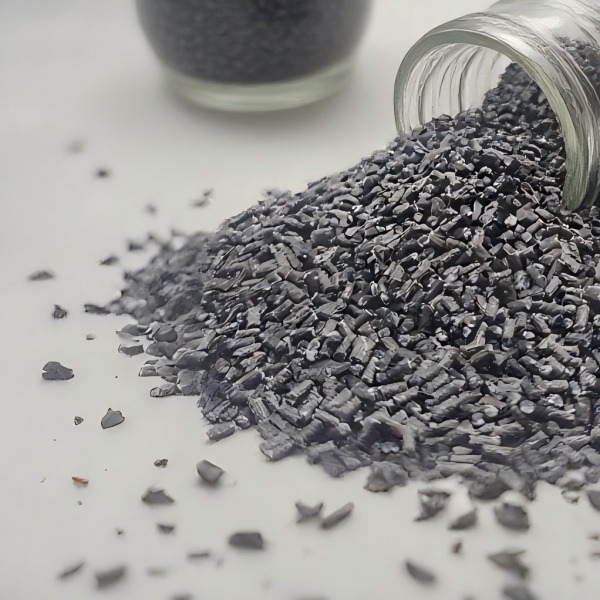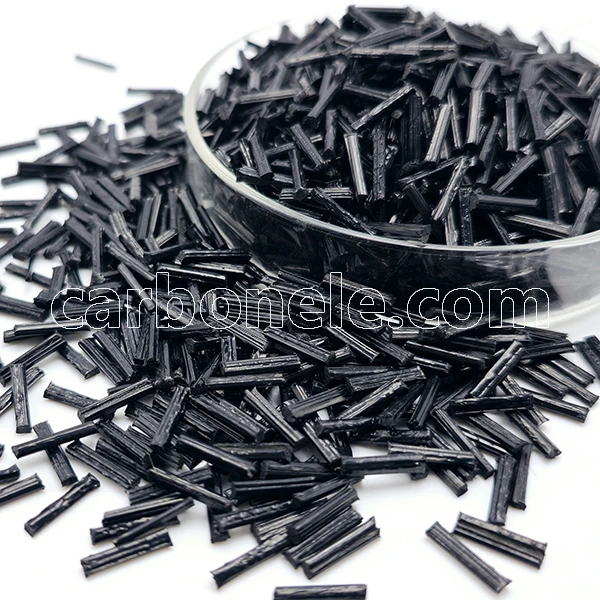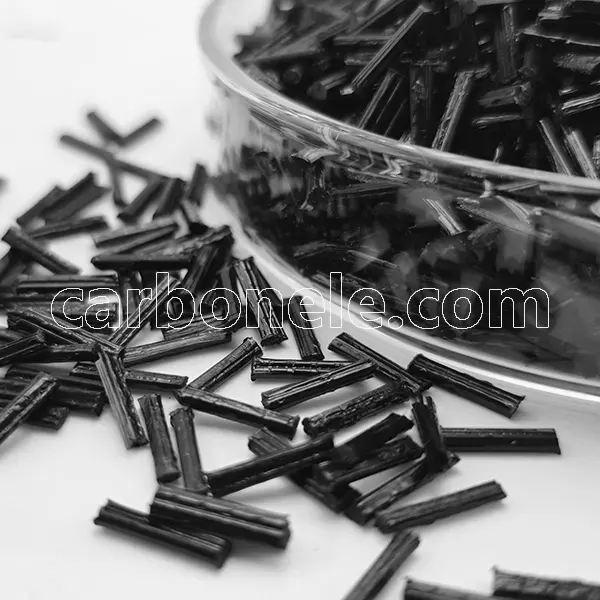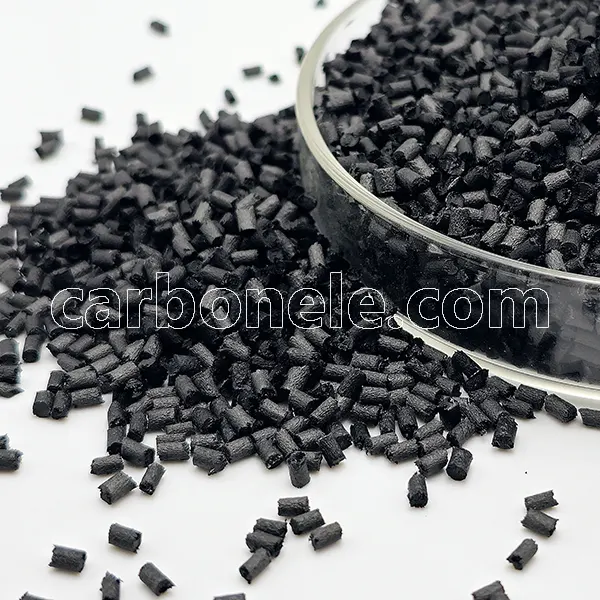ABS-CF10: End Flimsy Tooling Jigs With Our Robust Composite Material - Carbon Fiber Compounds Manufacturer | Supplier
ABS-CF10 is a high-performance carbon fiber-reinforced thermoplastic composite engineered to address the weight, strength, and efficiency limitations of traditional tooling jigs. By combining lightweight properties with exceptional mechanical performance, ABS-CF10 offers a 50% increase in stiffness and 15% boost in strength, making it ideal for automotive, aerospace, and industrial manufacturing applications. With low moisture absorption, high heat resistance, and rapid 3D printing capabilities, it serves as a superior alternative to metal and standard plastics, enabling efficient, precise, and sustainable manufacturing processes.
ABS-CF10: End Flimsy Tooling Jigs With Our Robust Composite Material
For decades, manufacturing and engineering have been locked in a constant struggle between the need for speed, strength, and efficiency.
The production floor is a demanding environment where tools, jigs, and fixtures are the unsung heroes, quietly ensuring precision, repeatability, and quality in every assembled part.
Yet, these critical components have often been a source of frustration. Traditionally machined from metal or molded from standard plastics, they frequently represent a compromise.
Metal tools are strong and durable but prohibitively heavy, expensive, and time-consuming to produce.
Standard polymer tools are lighter and faster to make but lack the necessary rigidity and strength for demanding applications, often bending, warping, or failing under stress, which leads to production delays, quality inconsistencies, and increased costs.
This longstanding compromise is now being rendered obsolete by a new class of advanced materials that are reshaping the landscape of manufacturing.
At the forefront of this revolution is a groundbreaking carbon fiber-reinforced thermoplastic composite known as ABS-CF10.
This innovative material delivers a powerful combination of lightweight properties and exceptional mechanical performance, offering a superior alternative that directly addresses the chronic pain points of traditional tooling.
The integration of ABS-CF10 into manufacturing processes is not merely an incremental improvement;
it is a transformative approach that empowers engineers and production managers to overcome historical limitations and achieve new levels of operational efficiency and reliability.
Understanding the ABS-CF10 Composite Material
The fundamental superiority of the ABS-CF10 material stems from its sophisticated composite architecture.
The base resin is a high-performance ABS (Acrylonitrile Butadiene Styrene) polymer, a workhorse thermoplastic renowned for its good impact resistance, mechanical strength, and ease of use. This provides an excellent foundation for manufacturing applications.
However, to meet the extreme demands of modern production environments, this robust polymer matrix is compounded with a precise concentration of a specialized reinforcement: short carbon fibers, making up 10% of the material by weight .
This integration is the key to the transformative performance of ABS-CF10. The carbon fibers act as an internal skeleton, drastically enhancing the stiffness and tensile strength of the composite.
They effectively resist bending and deformation, allowing tools to maintain their precise geometry under significant load. Simultaneously, the ABS matrix binds this reinforcement together, providing toughness, damage tolerance, and exceptional dimensional stability.
The result is a material composite where the whole is profoundly greater than the sum of its parts. ABS-CF10 delivers a unique profile of high modulus, low weight, and unparalleled stability, making it a purpose-engineered solution for applications where precision and durability are non-negotiable.
The material exhibits low humidity sensitivity, which is a critical factor in maintaining performance in various workshop environments
The Critical Role of Jigs, Fixtures, and Tooling in Modern Manufacturing
To fully appreciate the impact of ABS-CF10, one must first understand the critical function and demanding operating environment of manufacturing tools.
Jigs, fixtures, gauges, and assembly aids are fundamental to any production process. Their primary function is to hold workpieces securely in place, guide tools accurately, and ensure that every single part produced is identical to the last.
They are the guardians of quality control and the enablers of mass production.
These components operate under a host of stressors. They must resist mechanical deformation from constant clamping forces and the weight of components.
They are subjected to impacts, abrasion, and exposure to coolants, oils, and other chemicals commonly found on the factory floor.
Furthermore, they must maintain their precise dimensions despite fluctuations in ambient temperature and humidity.
The failure of a simple drilling jig can lead to misaligned holes, scrapped parts, and halted assembly lines, resulting in significant financial losses.
The quest for tools that are simultaneously strong, lightweight, quick to produce, and cost-effective has been a perennial challenge in industrial engineering.
It is within this context of exacting requirements that ABS-CF10 emerges as the superior material solution, effectively ending the era of flimsy tooling.
How ABS-CF10 Solves Persistent Tooling Problems
The implementation of tooling jigs machined or 3D printed from ABS-CF10 material illustrates a perfect synergy between material properties and engineering requirements.
The advantages are multifaceted and directly target the shortcomings of previous materials.
The most immediate benefit is a dramatic increase in stiffness and strength. Compared to standard ABS 3D printing materials, ABS-CF10 offers a 50% increase in stiffness and a 15% increase in strength.
This means that a fixture made from ABS-CF10 will not flex or bend under load, ensuring that every part is held in exactly the same position for every operation.
This eliminates the variability introduced by flexible tools, directly leading to higher quality finished products and eliminating scrap caused by tooling deflection.
Furthermore, the lightweight nature of ABS-CF10 composites delivers profound ergonomic and efficiency benefits.
A tooling jig constructed from this advanced composite is markedly lighter than an equivalent aluminum or steel part.
This reduction in mass makes the tools easier for operators to handle, reducing fatigue and the risk of repetitive strain injuries.
On automated production lines, lighter tools mean robotic arms can move faster and with greater agility, accelerating cycle times and boosting overall throughput.
The lower weight also simplifies the logistics of storing and moving tools around the workshop.
Perhaps one of the most significant advantages is the rapid production capability enabled by 3D printing with ABS-CF10.
Unlike metal tools that require weeks of lead time for CNC machining, a complex ABS-CF10 jig can be designed and printed on a Stratasys F370 printer in a matter of hours or days .
This allows manufacturers to respond with agility to engineering changes, line reconfigurations, or the introduction of new product models.
Design iterations can be made quickly and cost-effectively, accelerating time-to-market.
The use of soluble support materials allows for the creation of intricate geometries and internal channels that would be impossible or prohibitively expensive to machine, enabling optimized designs for weight reduction and functionality
Finally, ABS-CF10 offers exceptional long-term reliability. The material exhibits excellent resistance to creep, the tendency of a material to slowly deform under a constant mechanical load.
For a fixture that must clamp parts securely for thousands of cycles, this property is non-negotiable. Additionally,
its low moisture absorption ensures that the part will not swell or change dimensions in humid environments, a factor that could otherwise compromise precision over time.
Expert Insights: Industry Trends, Opinions, and Real-World Case Studies
The adoption of advanced composites like ABS-CF10 is a central theme in the ongoing evolution of smart manufacturing and Industry .
Industry analysts and leaders recognize the strategic value of moving beyond prototyping and into full-scale production tooling with additive manufacturing.
Industry Trends:
The market clearly recognizes the value proposition of polymer-based tooling. Stratasys’s own internal analysis has indicated that the additive manufacturing market for polymer jigs and fixtures is expected to grow at an average rate of 14.2% per year, effectively doubling the growth rate seen in previous periods .
This surge is driven by manufacturers’ relentless pursuit of agility, cost reduction, and efficiency gains.
A recent survey highlighted that 22% of users already employ 3D printing for manufacturing aids, and 33% believe this application represents the largest growth opportunity for additive manufacturing in the coming decade.
This trend underscores a major shift in perception, where 3D printing is now valued as a rapid and economical solution for creating robust tools, not just prototypes.
Expert Opinion:
Dick Anderson, Senior Vice President of Manufacturing at Stratasys, encapsulates this shift: “Manufacturers are increasingly turning to 3D printed carbon fiber materials for a reason. It is extremely strong, versatile, and light.
We want all FDM customers to be able to take advantage of these material properties, and the introduction of FDM ABS-CF10 is an important step in the continued evolution of 3D printing in global manufacturing.”.
This statement from a industry leader confirms the strategic importance of materials like ABS-CF10 in the future of industrial production.
Real-World Case Study – Automotive Manufacturing:
A compelling example comes from a large automotive manufacturer, a client of Javelin Technologies (a Trimech company).
Facing a production line reorganization for their trucks, they needed a replacement for a heavy metal mold used to imprint logos on tailgates.
The constraints were stringent: a two-week lead time and a mandate for lightweight design .
Initially, standard ABS was used with sparse infill to minimize weight, but the resulting strength was insufficient.
Using solid infill improved strength but added weight and still risked flexure.
The introduction of ABS-CF10 was a game-changer. Javelin was able to quickly print a robust, lightweight jig that met all strength and stiffness requirements within the aggressive timeline.
Conner Janeteas, Professional Services Manager at Javelin, noted, “I see this material as a huge addition to our existing portfolio.
ABS-CF will help us output Fortus-level quality and performance with faster turnaround and lower cost.”
This case perfectly illustrates how ABS-CF10 solves real-world problems of weight, lead time, and structural integrity.
Real-World Case Study – Aerospace & Defense:
Marshall Aerospace and Defence Group, a UK-based specialist in aircraft modification, utilizes Stratasys Fortus 450mc and F370 3D printers for various tooling applications.
Chris Botting, Materials and Environmental Engineering Manager at Marshall, highlighted the flexibility and cost savings: “The tools we create all have different and unique characteristics.
Our F370 3D printer allows us the flexibility to choose from a variety of materials based on application needs while also producing functional parts.
It has significantly reduced costs compared to parts we previously made from aluminum, and it also reduces the overall weight of the part.”
The company was eagerly anticipating the benefits of ABS-CF10 for creating manufacturing aids, expecting the same advantages they had found with other carbon fiber materials .
Scientific Data and Research Findings
The performance claims for ABS-CF10 are not merely marketing rhetoric; they are backed by rigorous testing and scientific data according to established international standards.
The material’s properties are meticulously quantified, providing engineers with the reliable data needed for confident design and implementation.
The key mechanical properties are validated through standardized testing protocols:
The 50% increase in stiffness (flexural modulus) and 15% increase in strength (tensile strength) compared to standard ABS are benchmarked through ASTM testing methods, providing a clear and verifiable performance baseline .
The heat deflection temperature (HDT) is a critical metric for tools that might be used in warmer environments or near heat-generating equipment.
ABS-CF10 boasts an HDT of 100°C at 66 psi and 99°C at 264 psi (ASTM D648), ensuring it remains dimensionally stable under elevated temperatures commonly encountered in manufacturing settings .
The glass transition temperature (Tg) of 104°C (ASTM D7426) further confirms its thermal stability, indicating the point at which the polymer begins to soften .
The coefficient of thermal expansion (CTE) is markedly lower than that of standard plastics. This is crucial for tooling, as it means the jig or fixture will expand and contract very little with temperature changes, maintaining precision and alignment. Testing per ASTM E831 shows a CTE of 19 μm/(m*°C) in the XY printing direction and 76 μm/(m*°C) in the Z direction .
This scientific data provides a robust foundation for justifying the adoption of ABS-CF10 in precision-critical applications, allowing for predictable and reliable performance.
The Future of Manufacturing with ABS-CF10
The integration of advanced composites like ABS-CF10 is a pivotal development in the field of industrial manufacturing.
The examples and data presented powerfully demonstrate how this specific material provides a holistic solution to a complex set of challenges.
It directly addresses the critical needs for unparalleled stiffness, lightweight construction, rapid production, and long-term reliability.
ABS-CF10 is more than just a material; it is a foundational technology that empowers innovation.
It allows manufacturing engineers to break free from the limitations imposed by traditional materials, paving the way for more agile, efficient, and cost-effective production floors.
As the demands for lighter weight, higher precision, and greater operational efficiency continue to grow across all industrial sectors, materials like ABS-CF10 will be at the forefront, enabling the next generation of manufacturing breakthroughs.
The future will likely see ABS-CF10 and similar composites become the standard for a vast range of manufacturing aids, from custom grips for collaborative robots to complex composite layup tools and large-scale assembly fixtures.
The ability to quickly iterate and produce these tools in-house will continue to compress product development cycles and drive innovation.
Choosing ABS-CF10 for manufacturing tooling is not merely a material selection—it is a strategic decision to invest in a more flexible, efficient, and competitive manufacturing operation.
References
1.Stratasys, Ltd. “Carbon Fiber ABS Material Meets Enterprise Manufacturing Needs.” Stratasys Official Website, 2 Dec. 2023, https://www.stratasys-china.com/news/carbon-fiber-abs-material-meets-manufacturing-needs.
2.Anderson, Dick. “Stratasys Introduces New ABS-CF10 Carbon Fiber Material, Making a Strong Landing on F123 Series 3D Printers!” Nanjixiong Forum, 19 Feb. 2021, https://www.nanjixiong.com/thread-144732-1-12.html.
Previous News
Key Benefits of PP CF Composite MaterialNext News
PBT-CF10: The 1 Material Upgrade You Need This ...
Feature Product
-
PA12 LCF30 for Drone Fuselages & Wings
What do you know about PA12 LCF30? PA12 ...
-
Competitive Price PA6 LCF30 Composites
What’s it? PA6 LCF30, which stands...
-
ABS CF10 Compound ABS 10%CF Thermoplastic Compo...
What’s ABS CF10? ABS CF10 refers t...









